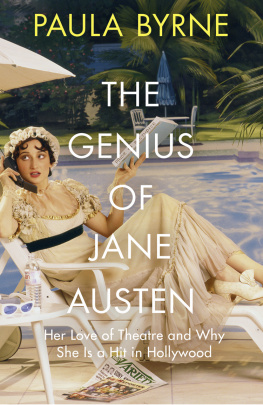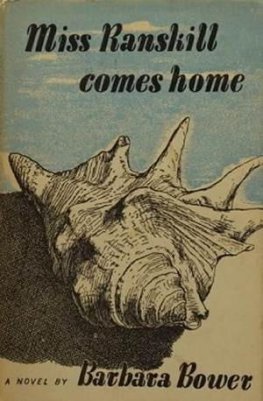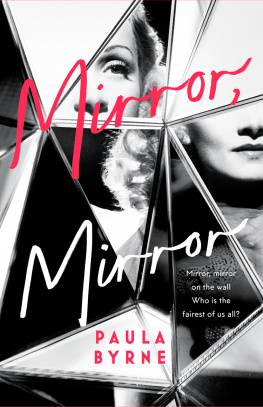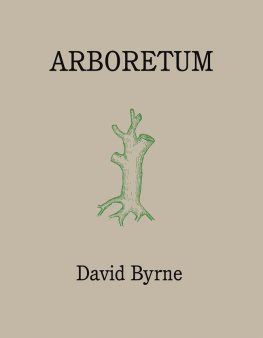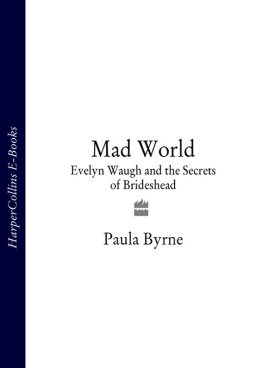Paula Byrne - The Adventures of Miss Barbara Pym
Here you can read online Paula Byrne - The Adventures of Miss Barbara Pym full text of the book (entire story) in english for free. Download pdf and epub, get meaning, cover and reviews about this ebook. year: 2021, publisher: HarperCollins Publishers, genre: Detective and thriller. Description of the work, (preface) as well as reviews are available. Best literature library LitArk.com created for fans of good reading and offers a wide selection of genres:
Romance novel
Science fiction
Adventure
Detective
Science
History
Home and family
Prose
Art
Politics
Computer
Non-fiction
Religion
Business
Children
Humor
Choose a favorite category and find really read worthwhile books. Enjoy immersion in the world of imagination, feel the emotions of the characters or learn something new for yourself, make an fascinating discovery.
- Book:The Adventures of Miss Barbara Pym
- Author:
- Publisher:HarperCollins Publishers
- Genre:
- Year:2021
- Rating:5 / 5
- Favourites:Add to favourites
- Your mark:
- 100
- 1
- 2
- 3
- 4
- 5
The Adventures of Miss Barbara Pym: summary, description and annotation
We offer to read an annotation, description, summary or preface (depends on what the author of the book "The Adventures of Miss Barbara Pym" wrote himself). If you haven't found the necessary information about the book — write in the comments, we will try to find it.
Paula Byrne: author's other books
Who wrote The Adventures of Miss Barbara Pym? Find out the surname, the name of the author of the book and a list of all author's works by series.
The Adventures of Miss Barbara Pym — read online for free the complete book (whole text) full work
Below is the text of the book, divided by pages. System saving the place of the last page read, allows you to conveniently read the book "The Adventures of Miss Barbara Pym" online for free, without having to search again every time where you left off. Put a bookmark, and you can go to the page where you finished reading at any time.
Font size:
Interval:
Bookmark:



William Collins
An imprint of HarperCollinsPublishers
1 London Bridge Street
London SE1 9GF
WilliamCollinsBooks.com
HarperCollinsPublishers
1st Floor, Watermarque Building, Ringsend Road
Dublin 4, Ireland
This eBook first published in Great Britain by William Collins in 2021
Copyright Paula Byrne 2021
Paula Byrne asserts the moral right to be identified as the author of this work
Cover design by Anna Morrison
Cover photograph the Barbara Pym Society
A catalogue record for this book is available from the British Library
All rights reserved under International and Pan-American Copyright Conventions. By payment of the required fees, you have been granted the non-exclusive, non-transferable right to access and read the text of this e-book on-screen. No part of this text may be reproduced, transmitted, down-loaded, decompiled, reverse engineered, or stored in or introduced into any information storage and retrieval system, in any form or by any means, whether electronic or mechanical, now known or hereinafter invented, without the express written permission of HarperCollins
Source ISBN: 9780008322205
Ebook Edition 2021 ISBN: 9780008322229
Version: 2021-02-23
for Stephen Pickles
No Need for Modesty in a Diary
Barbara Pym, 9 September 1933
It was August 1969, a few weeks after man landed on the moon and a couple of days before the assembled rock stars of the world played the Woodstock festival. The first episode of Monty Pythons Flying Circus would soon be broadcast on the BBC. An unmarried female novelist, now fifty-six years old, was feeling adrift in this brave new world, so she made a pilgrimage to the cottage in the Hampshire village of Chawton that had been the home of another unmarried female novelist.
That night, Barbara Pym wrote in her diary: I put my hand down on Janes desk and bring it up covered in dust. Oh that some of her genius might rub off on me.
Like Jane Austen, our novelist had published six well-received novels. She had built a following of devoted fans, including such luminaries as the poet Philip Larkin and the Oxford professor Lord David Cecil. She also had a legion of ardent excellent women who devoured her novels, borrowed them from the circulating libraries and waited expectantly for the next Barbara Pym. She had been hailed as the new Jane Austen.
But six years before her visit to Chawton, Pyms publisher, Jonathan Cape, had rejected Pyms seventh novel. It was 1963 and London was swinging. The decade had begun with the Lady Chatterley trial and now the Beatles had just released their first LP, Please Please Me. The editors at Cape felt that Barbara Pyms cosy domestic comedies were out of touch, outmoded.
Pym was shocked. She had just completed a draft of what would be her masterpiece. Like the novel she had submitted, it would be considered unpublishable. It was left to languish with her other manuscript novels in a linen cupboard in her shared house in London.
There have been times when even Jane Austens novels have fallen out of favour. Tastes and fashions change with each decade, each era. But a truly great body of work will sooner or later bounce back: Austens courtship novels, for instance which centred on village life, avoiding overt politics and the wider world are, for all their limited scope, now acclaimed as forerunners of the womens movement because they prioritised female experience in a world run by and for men.
Life had left Miss Barbara Pym emotionally bruised, though few would have known this by her outward appearance and demeanour. To look at her she seemed the epitome of middle-class respectability: perfectly coiffed hair; immaculately dressed; good shoes and handbag. To some, she might seem rather intimidating, redoubtable, even; though there was often a twinkle of good humour in those intelligent eyes. The young women in mini-skirts with beehive hairdos seemed to live on a different planet from Miss Barbara Pym, assistant editor of Africa magazine.
If only someone would have the courage to be unfashionable, Pym had remarked sadly to her friend Philip Larkin. She feared that her novels would go out of print and she would never find another publisher. Her sense of identity had been founded on her literary status, so Capes rejection was a bitter blow.

Barbara Pym was a lover not only of Jane Austen, but also of Austens eighteenth-century predecessors. At St Hildas College, Oxford, where she studied from 1931, female undergraduates were called by their surnames; Barbara was always Pym to her friends. But she also liked the appellation Miss Pym: she frequently referred to herself in this way in her letters, notebooks and journals. In an early (unfinished) novel, she describes the heroine, who is partly based on herself, as a perfect eighteenth-century lady. She loved Samuel Richardsons Pamela, but lost interest when Mr Bs intentions towards his beautiful maidservant became honourable. (It is a good point: Mr B is a wonderful villain but loses all credibility when he reforms.) It was the racier aspects of the novel that attracted Barbara Pym.
Pyms own diaries are prefaced The Adventures of Miss Pym, and later of Sandra and of Pymska, in the manner of Henry Fieldings masterpiece Tom Jones. Like Fieldings naive hero, Miss Pym spent much of her youth falling in love and surprisingly in the light of her reputation for provinciality a considerable amount of it on the road. So it is fitting to imagine her life as a picaresque adventure, with a Fieldingesque narrative: In which our heroine
Shropshire is a rural county in the north-west of England, nestling on the Welsh border. It is a green and pleasant land, but not far from the city of Liverpool and the industrial shipbuilding town of Birkenhead; it is quiet, slow, rainy and green. The poet A. E. Housman immortalised its blue remembered hills in A Shropshire Lad, even though he hardly spent any time there. Oswestry, in the north of the county and close to the border, was the birthplace of another poet, Wilfred Owen. It is an ancient market town dating back to 1190. Its narrow streets conjure up images of its medieval past: The Horsemarket, English Walls, Welsh Walls, The Bailey.
Barbara Pym was born in the family home, 72 Willow Street, near the centre of Oswestry. Across the road was the office where her father, Frederic Crampton Pym, practised as a solicitor; his brass plate Crampton Pym and Lewis is still in place beside the doorway. Barbara was born on 2 June 1913; her only sibling, Hilary, was born in 1916. By then, the family had moved to a detached Edwardian house called Morda Lodge. Set back from the road, it boasted a paddock, a coach house and a spacious garden of three acres. The attic room of the converted coach house was a playroom for the little girls.
Font size:
Interval:
Bookmark:
Similar books «The Adventures of Miss Barbara Pym»
Look at similar books to The Adventures of Miss Barbara Pym. We have selected literature similar in name and meaning in the hope of providing readers with more options to find new, interesting, not yet read works.
Discussion, reviews of the book The Adventures of Miss Barbara Pym and just readers' own opinions. Leave your comments, write what you think about the work, its meaning or the main characters. Specify what exactly you liked and what you didn't like, and why you think so.


